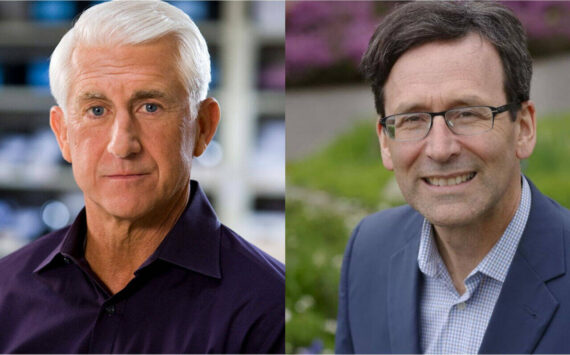By Morf Morford
Tacoma Daily Index
The term “missing middle” is a term most often applied to the housing market.
If you study history, you very quickly notice resonances or what might be called echoes of trends that cross lines or categories of business and culture.
In every category, from age and education demographics to housing to income distribution across populations and ethnicities, the extremes are inherently destabilizing (or are indicators of destabilization) and the middle is, almost by definition solid and stable.
In the legal arena for example, we don’t need liberal or conservative judges – we need judges, above all, who are insightful, objective, fair and compassionate.
We don’t need (or have) “red” or “blue” states; we have states with very different histories and identities, each one with constantly shifting sub-cultures and economic and social challenges and opportunities.
What we need in both of those cases is not firmer allegiance to extremist positions, but fair, decent and effective strategies in response to challenges and difficulties that impact every one of us. We don’t need louder voices. We don’t need more people on the fringes – we need more in the stable – and stabilizing – middle.
Population pyramid schemes
The largest bulge in age in the USA, for example, is where it should be for maximum productivity and stability – between the ages of 20 and 35.
Other nations have entirely different and unique dynamics at work. In Japan, for example, the largest age sector by numbers is between 45 and 55 – with about as many under age 4 as over age 90 (https://www.populationpyramid.net/japan/2019/).
In Rwanda, in contrast, one third of the nation’s population is under 30.
In Uganda, even more extreme, one third of the nation’s population is under 25 (https://www.populationpyramid.net/uganda/2019/).
To put it mildly, these population numbers put demands on social services and every aspect of the economy. And the population under 30 puts an even higher pressure on education and law enforcement.
Japan’s age imbalance in the other direction (the predominance of those over 45) also exerts distorted demands on social services and every aspect of the economy – including the productivity of the workforce that will support the generation moving into retirement.
The healthiest, most productive and most stable society is the one with the strongest “middle”. This same principle holds true in education, income and health care – among many other areas. Each one of these dynamics influences all of the others.
The difference between rich and poor is becoming more extreme, and as income inequality widens the wealth gap in major nations, education, health and social mobility are all threatened. – Helene D. Gayle
What has made America great – and a beacon to many around the world – is our reputation for opportunity, justice and equality for all. Squalor and corruption – and all that they breed, from bribery to exploitation to unbridled human degradation, might be good enough for some countries, but not for us.
Our surging economy, decade after decade was built on the best and the brightest (and sometimes the most desperate) from every nation.
We never had literal streets of gold, but for many would-be immigrants we offered something even better – the opportunity to explore and express one’s self in a way that was never possible, for a variety of reasons in the “old” country.
America was the “new”, the possible, the open-ended horizon with a destiny for all that would claim it, no matter one’s origins or previous allegiance or station in life. Opportunity was for all. As was education.
And fair and equal legal protection.
Any trial was judged, not by a king or even a local power-broker, but by a jury of one’s peers.
Anyone could run for office and, most of the time, in most places, any citizen could vote.
There was no royalty, few who were ostentatiously rich and few who were visibly and irredeemably poor.
Rags to riches was a myth many believed, and more than any other economic system perhaps, had the opportunity to replicate.
If we want to be a solid, stable and welcoming economy and culture, we need to reclaim and advocate for the best America has to offer.
We need to have a strong “middle”.
By almost any criteria, we have slid the other way for far too long.
Our middle class has shrunk, and we have far more millionaires – and homeless people – than ever before in our history.
Our schools, our prisons and our neighborhoods are tangible demonstrations of inequality in action.
We don’t need to cross a border to see public squalor.
You can see a global scale of global economic inequality here.
The United States has worse income inequality than Nigeria. – Max Fisher
The way to a revived and enduring “middle” is not difficult or complicated. In fact it should be familiar to us all; we just need to live up to what we say America has always stood for; equality in the eyes of the law, opportunity for all and tolerance and freedom for all faith traditions.






